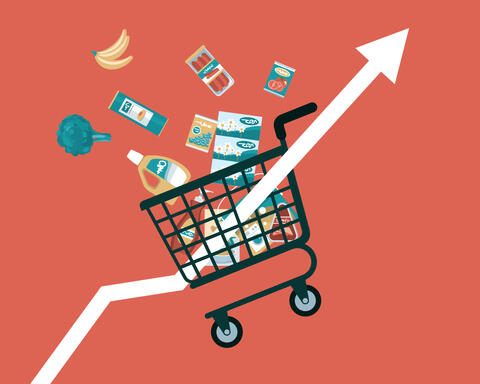Written by
Published
Category
Key topics
New research shows people with less money are willing to pay more to avoid potentially discriminatory commercial environments
What is it that makes the poorest city dwellers sense they don’t fit within the glossy shopping malls and stores of the well-to-do areas? A host of cues can make them feel uncomfortable: a security guard’s gaze, the disdain of affluent customers, an educated shop assistant’s impatience, the prominent CCTV throughout.
Poorer consumers will often tell you they expect to encounter suspicion and hostility in the richer neighbourhoods. We wanted to shed more light on this perceived discrimination, and test how consumers would respond to it. Would people with less money be willing to pay more to avoid potentially discriminatory commercial environments?
We know already that the poorest in society sometimes spend over the odds or choose lower quality options simply because they lack knowledge about or access to the optimal products and services – the so-called “ghetto tax”. Our work took this a step further to assess the existence of a “psychological ghetto tax”. Our hypothesis was that, even when the best deal is known about and readily accessible, poorer consumers may deliberately avoid it if the product or service is offered at an upscale commercial setting. Why? For fear of discrimination.
Cost versus setting in purchasing decisions
We set out to investigate this possibility in a series of studies conducted in Rio de Janeiro, a "mega-city" where you’ll see pockets of extreme poverty alongside some of the most affluent beachside neighbourhoods.
In some of our studies, rich and poor consumers were presented with a product that Brazilians, irrespective of socioeconomic standing, love: flip flops. However, there was a potential trade-off between location and price. Consumers could either buy the flip flops at a cheaper price in a more upmarket environment such as a department store in a fancy mall, or spend more for the same product in a humbler setting, such as a street newsstand close to the mall.
We found poor consumers often preferred to choose the more expensive option from the newsstand instead of getting the best deal at the mall – and did so for fear of discrimination. In fact, when asked to imagine how they would feel or think when facing a more upmarket setting, the anticipated discrimination represented a clear and blatant barrier among poor consumers: “It would be weird because I would be judged by my social class,” “they would keep staring at me in a suspicious way,” “I would be discriminated against, and they would even call the security personnel”.
By contrast, the wealthy consumers in our studies felt they could shop anywhere without a care – they felt completely unaffected by any perceived bias. Comments such as “no judgment at all; they are nice people,” “the usual type of treatment; they are always very welcoming,” “I’m sure I would be well treated…” were the norm.
Do social inclusion statements encourage consumers?
We wanted to investigate what corporations could say or do to dispel poorer consumers’ discomfort. Since companies often communicate their inclusion policies to consumers, we assessed which type of social inclusion statement would be the most persuasive – that is, which statement presented by the fancier shop or mall would increase consumers’ willingness to go there to buy the cheaper flip flops.
One of the statements focused on equality ("It is because we believe that we are all equal that we value all types of customers within our stores”). Another focused on uniqueness (“We are all different and unique, and we are very proud of that. Embracing these differences is what matters most to us”). A third highlighted the problem and the company’s duty to address it (“We acknowledge that stores can be environments of discrimination by social class, neighbourhood/community of residence. It is our duty to fight any type of discrimination.”).
Participants were assigned to one of these three statements or to a standard marketing message that focused on service quality. Our results showed the social inclusion statements in general did make the poorer consumers more inclined to purchase the cheaper option at the mall. However, the statement that acknowledged stores can be environments of discrimination and highlighted their duty to fight it proved to be the least effective. The statements that focused more on the solutions and talked positively about diversity, equality and inclusion among consumers were the most persuasive, at least in that context.
With the increased poverty and inequality around the world, learning whether and how these psychological burdens operate in other markets and cultures is critical. We must also investigate the impact on aspects other than price sensitivity. When are the most destitute less likely to select higher quality products or services for sheer fear of discrimination? Now more than ever we need a more nuanced understanding of the hidden taxes that blight the poorest inhabitants, in order for governments, businesses and consumers to step in and act.
This article draws on findings from "Expected Socioeconomic-Status-Based Discrimination Reduces Price Sensitivity Among the Poor" by Jorge Jacob (IESEG School of Management), Yan Vieites (Fundação Getúlio Vargas), Rafael Goldszmidt (Fundação Getúlio Vargas) and Eduardo B. Andrade (Imperial London).


